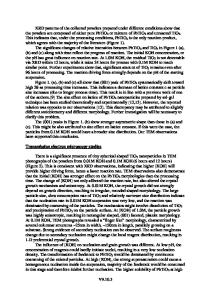Effect of processing temperature on the morphology of hydrothermally derived barium titanate/polymer thin films
- PDF / 704,108 Bytes
- 8 Pages / 612 x 792 pts (letter) Page_size
- 85 Downloads / 364 Views
Thin-film composites of BaTiO3 particles in a polymeric matrix were processed by reacting films of a titanium alkoxide, mixed with a polybutadiene-polystyrene triblock copolymer, in aqueous solutions of 1.0 M Ba(OH)2 at temperatures ranging from 60 to 90 °C. After reaction, the composite films displayed distinct surface and subsurface morphologies. The film surface consisted of a continuous layer of BaTiO3 grains, the film grain size decreasing from 180 to 60 nm as the reaction temperature increased from 60 to 90 °C. The subsurface growth of BaTiO3 depended on the presence of a percolating network of hydrolyzed titanium alkoxide, which enabled the reaction solution to permeate throughout the thin film. The resulting subsurface film morphology was composed of segregated regions of BaTiO3 particles dispersed throughout the polymeric matrix. The growth of subsurface BaTiO3 particles appeared to be constrained by the polymer matrix, resulting in a subsurface particle size of approximately 5 to 10 nm that was independent of the hydrothermal processing temperature. The reacted films displayed a dielectric constant ranging from 10 to 15 at room temperature and a frequency of 10 kHz.
I. INTRODUCTION
Thin-film ceramic/polymer composites can provide advantages over ceramic films in a number of ways. For example, dispersions of ceramic particles in polymers have been processed for applications ranging from nonlinear optics to abrasion-resistant coatings.1,2 In this context, changes in the particle size and connectivity as well as the overall composite microstructure can influence the material properties. Polymer additions also facilitate film processing on substrates with nonplanar surfaces, and result in more flexible films that are less susceptible to cracking. Processing routes to ceramic/polymer composites depend on the size scale of the component. For bulk materials and thick films (>10 m), composites may be processed by either casting a suspension of ceramic powder in a polymer solution, or molding a polymer melt loaded with ceramic powder.3,4 Also, a variety of composites have been processed by mixing ceramic powders with epoxy precursors prior to curing.5,6 However, these approaches are not feasible for thin-film processing (
Data Loading...









